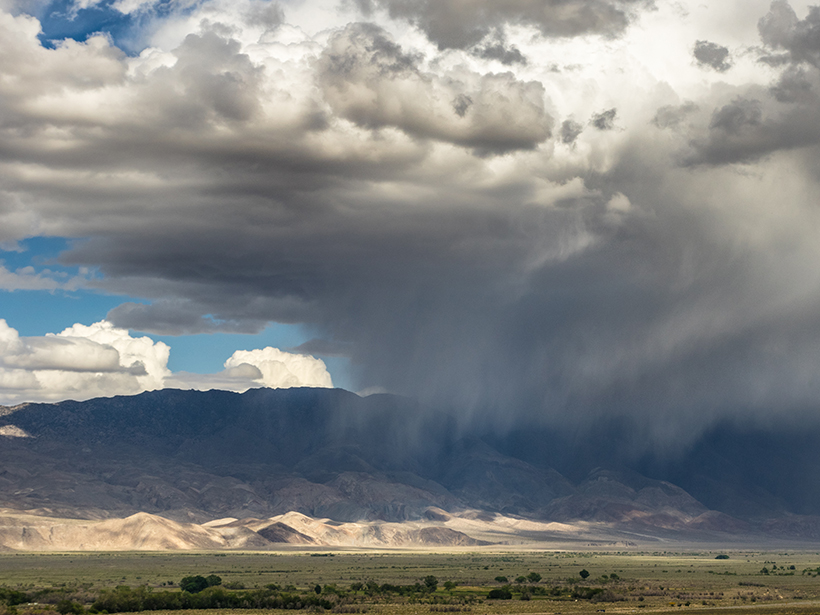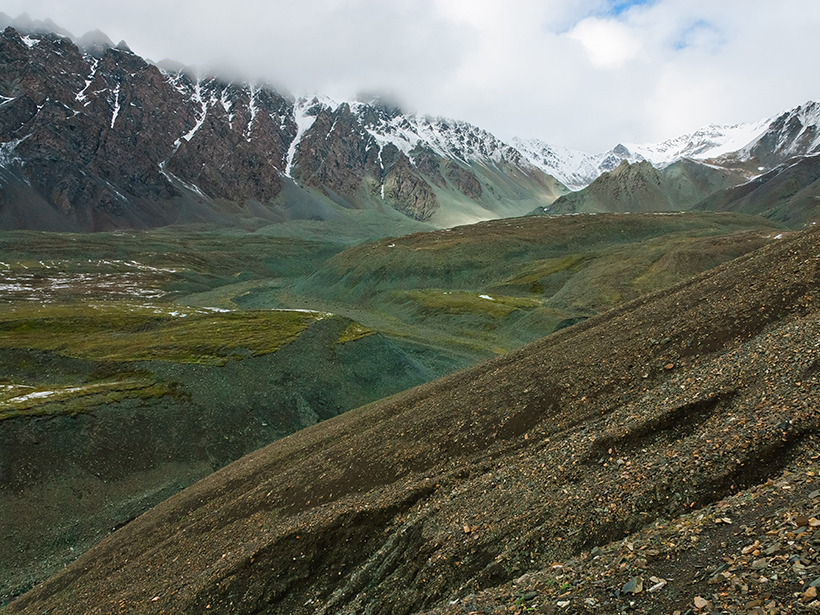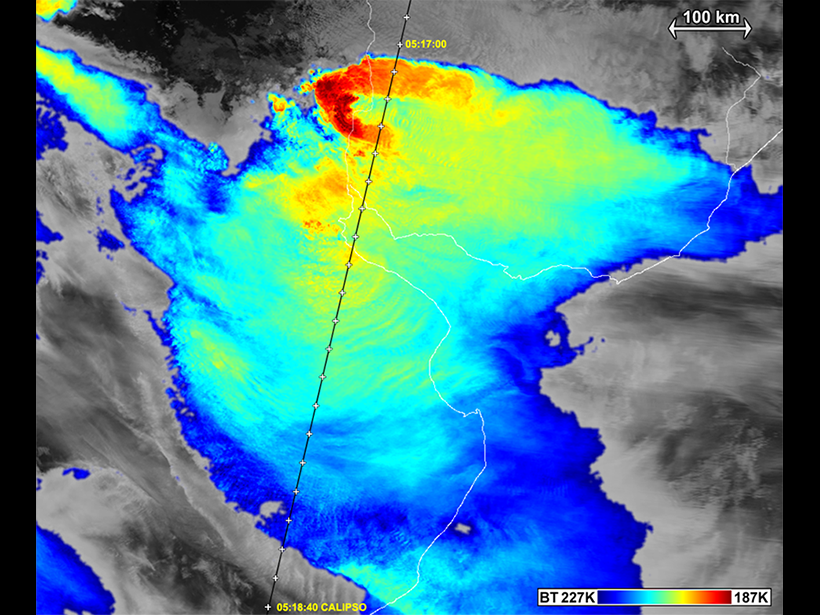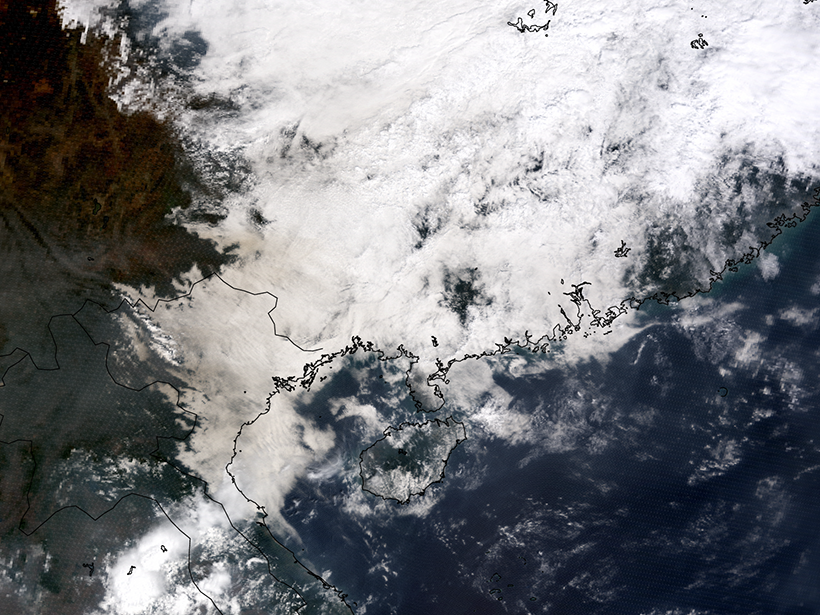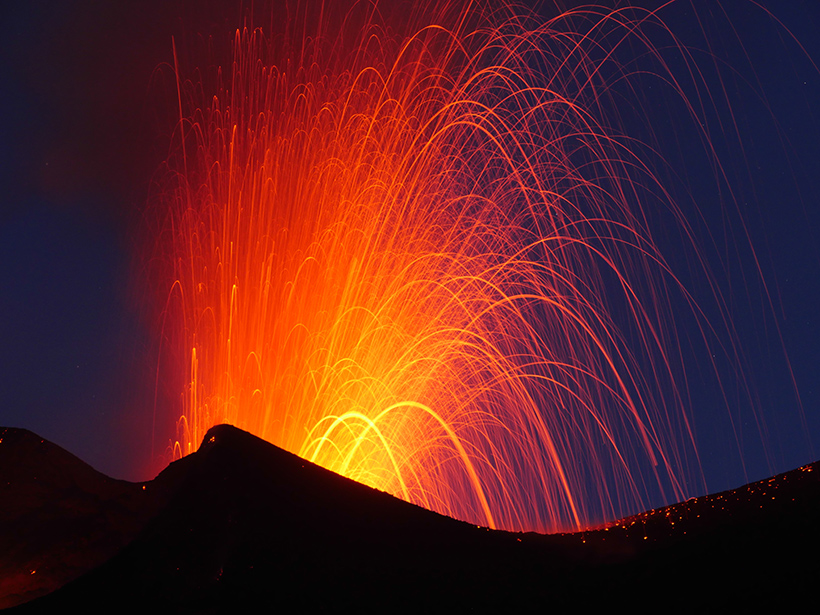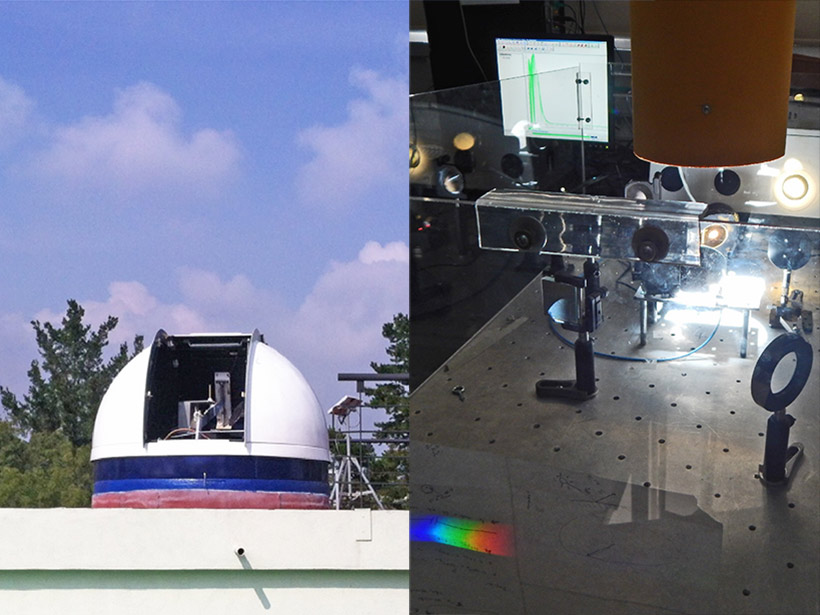New research shows that the Sierra Nevada snowpack will likely not recover from the current drought until 2019.
remote sensing
Surveying Alaskan Minerals from Afar
By using hyperspectral imaging, researchers test their ability to find copper in remote areas.
Telica Volcano Rested Quietly Right Before Spewing Ash
The length of quiet periods predicts the severity of eruption events, according to a new model that might soon help forecast explosions worldwide.
When Thunderstorms Have Wings
A new study uncovers the origin of a gull wing–shaped cirrus cloud above an Argentinian thunderstorm captured in satellite images.
Multicolor Terrain Mapping Documents Critical Environments
The Titan airborne topographic laser system takes spatial and spectral data at three wavelengths at once, mapping threats from climate change and ecological disasters in regions with complex terrain.
Measuring Atmospheric Aerosols Despite the Clouds
Researchers devise ways for remote sensors to integrate aerosol content above clouds into current methods of measurement.
Tropical Rainfall Intensifies While the Doldrums Narrow
Scientists show long-term changes in the Intertropical Convergence Zone's location, extent, and rainfall intensity.
As Lava Flows, Refined Model Predicts a Path
Simulations that melded volcano topography, satellite observations, and virtual lava accurately anticipated the destruction of villages 18 months ago by Cape Verde's Fogo volcano.
Mexico City Hosts a Course on Remote Sensing for Latin Americans
Course on Remote Sensing Techniques Applied to Atmospheric Chemistry; Mexico City, Mexico, 7–11 December 2015
Martian Carbonates Spotted by the Orbiter
The minerals identified by the Mars Reconnaissance Orbiter provide more evidence that the planet may have once been habitable.

